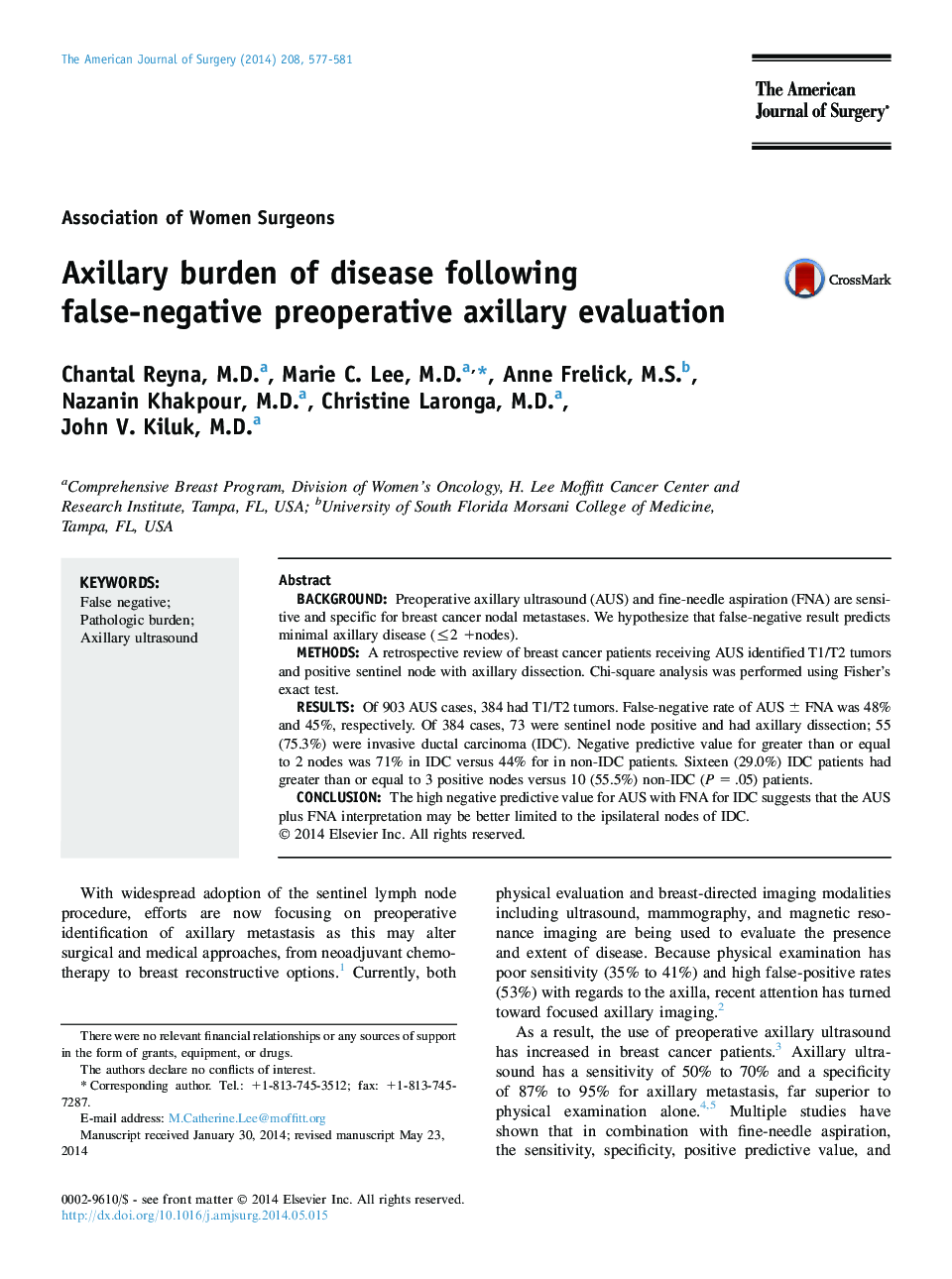| Article ID | Journal | Published Year | Pages | File Type |
|---|---|---|---|---|
| 4278961 | The American Journal of Surgery | 2014 | 5 Pages |
BackgroundPreoperative axillary ultrasound (AUS) and fine-needle aspiration (FNA) are sensitive and specific for breast cancer nodal metastases. We hypothesize that false-negative result predicts minimal axillary disease (≤2 +nodes).MethodsA retrospective review of breast cancer patients receiving AUS identified T1/T2 tumors and positive sentinel node with axillary dissection. Chi-square analysis was performed using Fisher's exact test.ResultsOf 903 AUS cases, 384 had T1/T2 tumors. False-negative rate of AUS ± FNA was 48% and 45%, respectively. Of 384 cases, 73 were sentinel node positive and had axillary dissection; 55 (75.3%) were invasive ductal carcinoma (IDC). Negative predictive value for greater than or equal to 2 nodes was 71% in IDC versus 44% for in non-IDC patients. Sixteen (29.0%) IDC patients had greater than or equal to 3 positive nodes versus 10 (55.5%) non-IDC (P = .05) patients.ConclusionThe high negative predictive value for AUS with FNA for IDC suggests that the AUS plus FNA interpretation may be better limited to the ipsilateral nodes of IDC.
